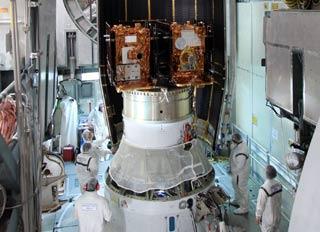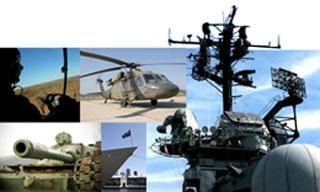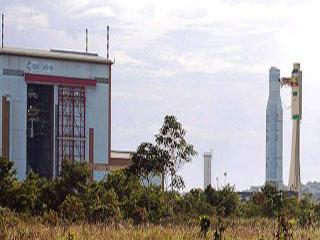
The payload fairing is added to the GRAIL booster. Photo: NASA/KSC.
CAPE CANAVERAL, FLORIDA (BNS): NASA's Gravity Recovery And Interior Laboratory (GRAIL) mission to study the moon is in final launch preparations for a scheduled Sept. 8 launch from Cape Canaveral Air Force Station in Florida.
"Our two spacecraft are now sitting comfortably inside the payload fairing which will protect them during ascent. Next time the GRAIL twins will see the light of day, they will be about 95 miles up and accelerating," David Lehman, GRAIL project manager for NASA's Jet Propulsion Laboratory in Pasadena, California, was quoted as saying in the NASA news report.
GRAIL's twin spacecraft are tasked for a nine-month mission to explore Earth's nearest neighbour in unprecedented detail.
They will determine the structure of the lunar interior from crust to core and advance our understanding of the thermal evolution of the moon, the report added.
The spacecraft twins, GRAIL A and B, will fly a circuitous route to lunar orbit taking 3.5 months and covering approximately 2.6 million miles (4.2 million km) for GRAIL—A, and 2.7 million miles (4.3 million km) for GRAIL—B.
In lunar orbit, the spacecraft will transmit radio signals precisely defining the distance between them. Regional gravitational differences on the moon are expected to expand and contract that distance.
GRAIL scientists will use these accurate measurements to define the moon's gravity field. The data will allow mission scientists to understand what goes on below the surface of our natural satellite.
"GRAIL will unlock lunar mysteries and help us understand how the moon, Earth and other rocky planets evolved as well," said Maria Zuber, GRAIL principal investigator from the Massachusetts Institute of Technology in Cambridge, as reported by NASA.
GRAIL’s launch period opens Sept 8 and extends through Oct 19.
 Previous Article
Previous Article Next Article
Next Article












The Indian Air Force, in its flight trials evaluation report submitted before the Defence Ministry l..
view articleAn insight into the Medium Multi-Role Combat Aircraft competition...
view articleSky enthusiasts can now spot the International Space Station (ISS) commanded by Indian-American astr..
view article